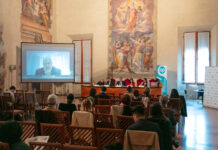by Maurizio Sacchi
There are currently 19 million poor people in Argentina out of a population of 46 million: 41 percent. This is a dramatic figure, and it does not look like it is going to get any better, as President Milei has made it clear that he plans a broad plan of “chainsaw” cuts in public spending. He has already provided for the dismissal of nearly 15,000 state workers and reiterated what he has always said even before a large majority elected him to the Casa Rosada: recovering the enormous debt accumulated by the South American country for decades will mean tears and blood and will take time before we see results.
But for the International Monetary Fund, progress to date is “impressive,” even if “the road to stabilization is never easy,” as IMF communications director Julie Kozack put it, emphasizing the Fund’s strong support for the Milei administration. The leader of La Libertad Avanza has pledged to reach zero deficit this year: “In both January and February, a fiscal surplus was recorded for the first time in more than a decade, international reserves have been rebuilt, inflation is falling faster than expected – the IMF says – and market indicators such as the exchange rate gap and the sovereign spread continue to improve” (the sovereign spread is the cost of a country’s foreign debt).
Argentine authorities are implementing “an ambitious [macroeconomic] stabilisation plan” centred on “a strong fiscal anchor” that eliminates any public financing by the Central Bank and policies aimed at reducing inflation and rebuilding reserves, but “the road to economic stabilisation is never easy and requires firm policy implementation,” the spokeswoman said in Washington.
The IMF report makes no secret that Argentina’s inflation exceeds 250 per cent annually and that more than 41 per cent of the population lives below the poverty line. On this front, however, it praised “the authorities’ recent efforts to expand social assistance through the emblematic family allowance program with proper attention and to protect the real value of pensions,” evidently aware that the reforms need “social and political support to ensure their durability and efficiency,” in Kozack’s words.
But even between Milei and the IMF, it is not all roses. Milei revived a request for a $44 billion credit with the IMF, to which the Fund responded that “At this time it would be premature to discuss the modalities of a potential future program” (…) “We continue to support the creation of the basis for growth, but it is premature to discuss the modalities of a potential future program.” How then to read the Washington-based Fund’s praise? They serve to justify before the World of Finance the extension granted on 1 February of the $44 billion loan program until 31 December of this year and to reassure foreign investors that their credit will be repaid on time and in the prescribed manner.
Rodrigo Valdés, director of the IMF’s Western Hemisphere Department, had to acknowledge that the Milei approach “is cumbersome and the path to stabilization is never easy, it requires strong policy implementation in general (…) We need to continue to adapt throughout the transition and exchange rate controls need to be calibrated very carefully. In addition, we believe it is very important to maintain efforts to support the most vulnerable sectors of the population and thus ensure that the heaviest burden of adjustment does not fall disproportionately on working-class families.”
Milei for now does not seem to worry too much about the social costs and is counting on disillusionment with Peronism, which won him election to the presidential elections. But, if inflation has even worsened, and so far more jobs have been lost than have been created and poverty is not abating, disillusionment could spill over to him even well before the end of his term. In the public squares earlier than in the ballot box.
On the cover photo, president of Argentina Javier Milei ©lev radin/Shutterstock.com
























